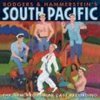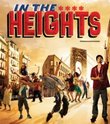SITE GUIDE
SEARCH
REVIEWS
REVIEW ARCHIVES
LISTINGS
Broadway
Off-Broadway
BOOKS and CDs
OTHER PLACES
Berkshires
London
California
New Jersey
DC
Connecticut
Philadelphia
Elsewhere
QUOTES
TKTS
PLAYWRIGHTS' ALBUMS
Masthead
Writing for Us
A CurtainUp Review
Red
|
The Donmar Warehouse Production of Red at Broadway's Golden Theater By Elyse Sommer Original London Review
Molina, a dramatic actor, daringly returned to Broadway in 2005 as the world's most famous fictional singing milkman in a revival of Fiddler on the Roof, but Logan was profitably sidetracked to films (The Aviator and Sweeney Todd). Now, after a successful world premiere at London's Donmar Warehouse, New Yorkers have a chance to see both Logan's playwriting expertise and Molina's versatility as an actor thrillingly on display in Red Red is like Molina's first Broadway play also about art — the art of the renowned abstract expressionist Mark Rothko, specifically a series of canvases he was commissioned to create for the new Seagram building's Four Seasons restaurant on Park Avenue. That commission was a turning point in Rothko's struggle to deal with the compromises of riches and acclaim. But Red is not a comedy — Rothko was too complicated a man for comedy, as are the various issues explored in the course of the play's fleet-footed 90 minutes. Yet Logan's script is peppered with dialogue that's sharp and funny as well as intelligent, thought provoking and often devastating. Mr. Logan's astutely constructed script and Molina's riveting performance, impressively supported by Eddie Redmayne as his assistant, will quickly upend any idea you may have that listening to an extremely intellectual painter talk about his process for making art may be more like watching paint dry than an exciting drama. Red, besides being one of the most stimulating dramas to land on Broadway this season, is a visual stunner. The recreated Rothko paintings are powerful; not just props, but vivid characters. Redmayne, like Molina, is reprising the role of Ken that he created in London. As Lizzie Loveridge mentioned in her review, Ken initially seems little more than his employer's foil, but the role gains in significance as the young apprentice begins to challenge the older man. The drama gains momentum through Logan's confining it within the studio and the two men's conversations. Since their interchanges, usually dominated by Rothko, play out over two years (1958-59), the bits and pieces of Rothko's early life, as well as Ken's personal history, meld in organically. As Ken emerges as the symbol of the pop artists who threaten Rothko's hard won top of the heap status and offend his sensibility, so Rothko's relationship with him ends up symbolizing all fathers who — whether painters, politicians, or businessmen — must set their heirs free to follow their own inclinations. The physical demands on both actors are breathtakingly realized in the scene in which Beethoven's 9th Symphony propels the men into a frenzied dance that has them covering one of the large canvases with a base coat of red paint. Music plays an important role throughout. The production values overall are superb, with the London design team aboard. Lighting designer Neil Austin most effectively and subtly highights the shifts in emphasis on the red and the black panels. When Ken loses his cool and accuses Rothko of cold indifference to him, both as a person and as a painter, he fails to stir up any regrets or apologies. Being the egoist he is, Rothko answers Ken's "Have you ever once asked to look at my work?" as follows: "Why should I?. . .You're an employee. This is about me. Everything here is about me." For some audiences this had an unanticipated double meaning, since it tended to bring to mind another show that landed in town around the same time entitled All About Me. In that entirely missable and short-lived endeavor cabaret artist Michael Feinstein and drag-comedienne Dame Edna Everage spent their 90 minutes on stage arguing about who should be the Me of the title. On the other hand, Albert Molina's Me may not be a lovable, cuddly hero, but everything about his performance and the play generally is all about a not to be missed theatrical experience. For more details about the production jump to the Original London Review. Trivia Note: While most of the Four Seasons canvases are on view at the Tate in London, the restaurant has not replaced the withdrawn commissions with another famous artist's work, but instead fills the room for which they were intended with works borrowed from the PaceWildenstein galleries. Rothko's ruminations about Jackson Pollock's suicide are prescient, since he too committed suicide. Production Notes Red by John Logan Directed by Michael Grandage Starring: Alfred Molina, Eddie Redmayne Set and CostumeDesign: Christopher Oram Lighting: Neil Austin Composer and Sound: Adam Cork Stage Manager: Arthur Gaffin Running time: One hour 30 minutes without intermission Golden Theater 252 W. 45th Street 212/239-6200 From 3/11/10; opening 4/01/10;closing 6/27/10 Tickets $116.50; as part of Donmar commitment to greater accessibility 60 seasts at $25 for each performance Tues-Saturday at 8pm; matinees Wed and Sat. matinees at 2pm, Sundays at 3pm; after 4/12: Tuesdays at 7pm Reviewed by Elyse Sommer March 27th press preview |
|
Subscribe to our FREE email updates with a note from editor Elyse Sommer about additions to the website -- with main page hot links to the latest features posted at our numerous locations. To subscribe,
E-mail: esommer@curtainup.comesommer@curtainup.com
put SUBSCRIBE CURTAINUP EMAIL UPDATE in the subject line and your full name and email address in the body of the message -- if you can spare a minute, tell us how you came to CurtainUp and from what part of the country. |
|
Do you think Andy Warhol will be hanging anywhere 100 years from now?— Mark Rothko
|
We meet Rothko in the late 1950s when he has been commissioned to paint a series of 40 canvases for the Ludwig Mies van der Rohe and Philip Johnson designed Seagram Building. It is for the Four Seasons Restaurant dining room that the disturbing dark red and brown paintings are intended.
Molina's portrait of the artist is as moody and intense as the paintings. He rages and tells us how he and De Kooning destroyed cubism and Picasso. Later in the play he rails against those artists who were to follow him in gaining popularity, hating the pop art of Jasper Johns, Roy Lichtenstein, Robert Rauschenberg and Andy Warhol which he dubs "zeitgeist" art. Rothko talks about the tyranny of the beautiful and says that he doesn't want his art to be over the mantel interior decor which ironically large numbers of prints of Rothko's work have become.
Rothko paints to stretches of inspiring space filling, classical music — Mozart, Haydn and Gluck or jazz from Chet Baker. The most exciting scene has Ken and Rothko, accompanied by opera, together paint the base red coat on one of the eight feet square canvases, getting splattered in paint in the passion of painting. This scene is frenetic and conveys more of the emotional intensity placed in art than any amount of words. Both the artist and his assistant end up with their faces splattered with blood red paint like workers in a chaotic abattoir.
Set designer Christopher Oram has rigged up the large pulley system that Rothko used in his Bowery studio to see the pictures vertically as they would be hung. In the course of the play we see several different canvases as each is brought out and hoisted on the pulleys.
Molina gives us Rothko as a moody, difficult man, angry and uncompromising in his ideals. We look at one of the large paintings with two black rectangles on a red background. Rothko, passionate but bullying, asks whether we can see the aperture, the gaping mouth. As Ken says condemningly of the master, "I can't imagine any painter in the history of art tried to be so significant!"
The playwright has included biographical snippets from Rothko's childhood and life so we learn about the man: witnessing the pogroms against the Jews in Eastern Europe, coming to America as a child and going to rabbinical school. Eddie Redmayne has a rather thankless part as the foil to the artist, initially stifling his own emotions but later maturing into an artist of his own generation with his own ideas.
Of course Rothko ended up rejecting the restaurant venue for his art, repaying the $35,000 advance and donating some to the Tate in London where nine of the "restaurant" paintings now have a room of their own. They are dark and unrelenting, angry and brooding, lit only by natural daylight. Rothko told Harper's journalist John Fischer this about the restaurant commission: "I hope to ruin the appetite of every son of a bitch who ever eats in that room with paintings that will make those rich bastards feel that they are trapped in a room where all the doors and windows are bricked up.".
Michael Grandage and Christopher Oram have together created a wonderfully visual and searing production. In the closing scenes Neil Austin lights the paintings so that they lose that dark, dried oxblood red and become something more vibrant. When the paintings are moved the backdrop shows blood splattered walls reminding me of the current exhibition of Anish Kapoor's red wax splattered walls, where the door filling red wax extrudes through the doorway arches. I can't help thinking if Rothko had approved of any other artist, he would have approved of this work of Kapoor's. After the Donmar's Red I shall be revisiting the Tate Rothkos with a different perception.
The London production was reviewed by Lizzie Loveridge at the Donmar Warehouse on December 9.2009.






